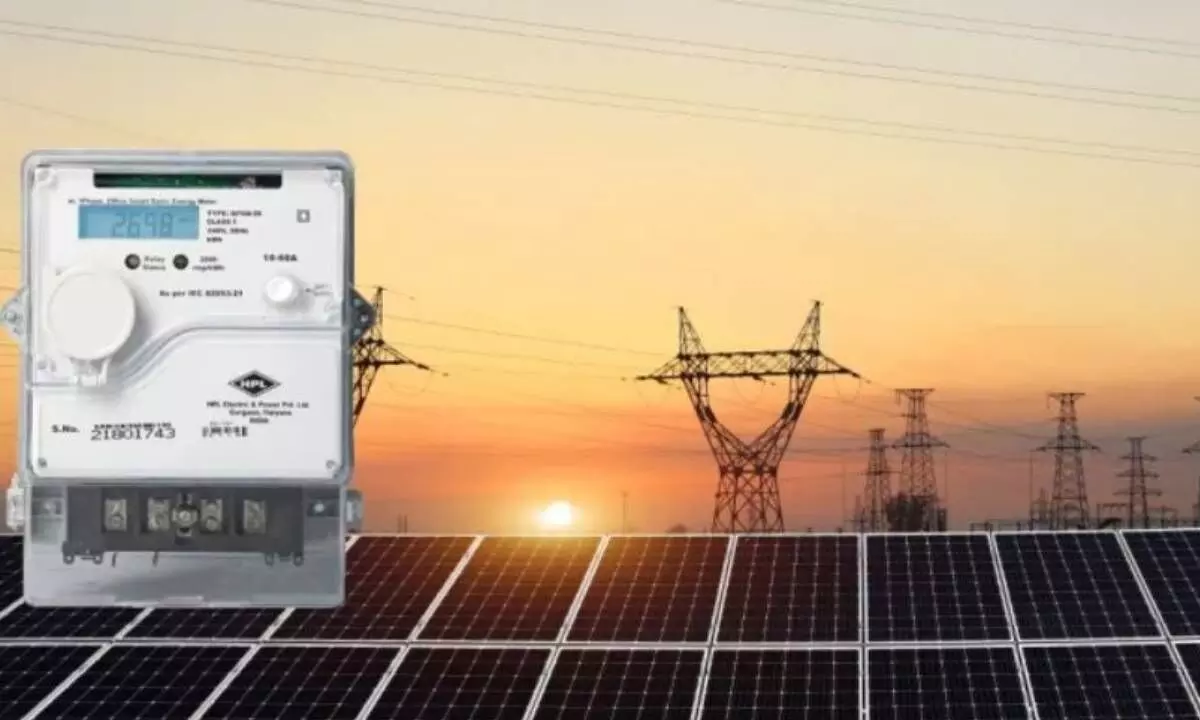Power sector revival: Proposed ‘time of day’ tariffs will cut bills
Storage of power from renewable energy sources remains a matter of concern
image for illustrative purpose

There will soon be a sea-change in the way consumers will pay for electricity supply. The amendments made last month to the Electricity (Right of Consumers) Rules 2020, have now allowed the introduction of tariffs based on the time of day (TOD) concept. In other words, the rate of payment will vary depending on the time of power consumption. The new system is expected to reduce the load on generating and distribution companies during peak usage hours and also provide an incentive to utilise more renewable energy.
The scheme envisages that tariff during the eight hours of day time or what are being called “solar hours” will be at least 20 per cent lower than the normal tariff. The eight-hour cycle will be specified by each State Electricity Regulatory Commission (SERC). Tariffs during peak hours, in contrast, will be at least 20 per cent higher than the normal tariff for commercial and industrial consumers. It will be at least 10 per cent higher for other consumers.
The caveat of the new system is that all power users should have smart meters. Apparently many SERCs have already launched the new pricing mechanism for large commercial and industrial users but the smart meters must be installed in households now for domestic consumers.
The immediate benefit of the new tariff scheme is that consumers can reduce their power bills by using more electricity during the solar hours when rates are lower. While this helps the ordinary domestic consumer, it also gives a relief to power generating companies, which will face lower usage during peak consumption hours. It also means that renewable energy capacity, especially solar energy, can be tapped for use during the daylight hours.
The need for smart meters is essential, in this context, as only then can consumers monitor the time available for the cheaper tariffs and adjust their usage accordingly.
At the same time, there are some concerns over storage of power from renewable energy sources which are still being ironed out. It must be noted that this system could be introduced only now that the share of renewable energy has reached 40 per cent of total installed power capacity.
Along with these changes in the tariff mechanism, other major developments in the power sector are giving rise to optimism that the concept of round-the-clock supply could become a reality in the near future. The most significant one is the dramatic improvement in the sector’s fiscal health. This has been made possible by imposing stringent discipline on the state power distribution companies (discoms) that have traditionally failed to pay their dues on time to the generating companies.
New policies have been introduced to ensure that power is not accessible by the discoms unless current dues are cleared. The aim has been to ensure that state governments offering free or subsidised power at the time of elections take the financial burden on themselves rather than passing it on to the generating companies.
The decision to stop power supply to errant discoms must have taken political will, though it has an economic rationale. The result is that current dues are being paid up while legacy debt has also been brought down. According to a written reply in the Lok Sabha by Power Minister R.K. Singh, such debt has been reduced from Rs. 1,38,378 crore last year to Rs. 91,061 crore by March 2023.
The other big change in the power sector is the sharp reduction in technical and commercial losses. The high level of such losses has been attributed either to faulty infrastructure or simply massive pilferage. This has been an issue that has remained unresolved for decades. A written reply in the Lok Sabha on the issue of line losses due to electric pilferage says such losses have been brought down from 23.72 per cent in 2016-17 to 17 per cent in 2021-22. This is still much higher than the global norm, which is around six to eight per cent.
The question is when will all these efforts to reinvigorate the power sector, bring about the much-needed assured round-the-clock supply? There seems to be some hope as Power Minister R.K. Singh has claimed that the availability of power in both rural and urban areas has expanded to 22.5 and 23. 5 hours respectively. This could be an optimistic assessment, especially for rural areas that face regular outages in electricity supply. Nevertheless, the big hurdles of reducing the debt overhang for discoms and cutting line losses to manageable levels seem to have been overcome by bringing financial discipline to the sector.
The new scheme of allowing consumers to vary their usage based on the time of day is also in line with international norms. One can only hope that the ultimate goal of continuous power supply for both industrial and domestic consumers is achieved sooner than later.

